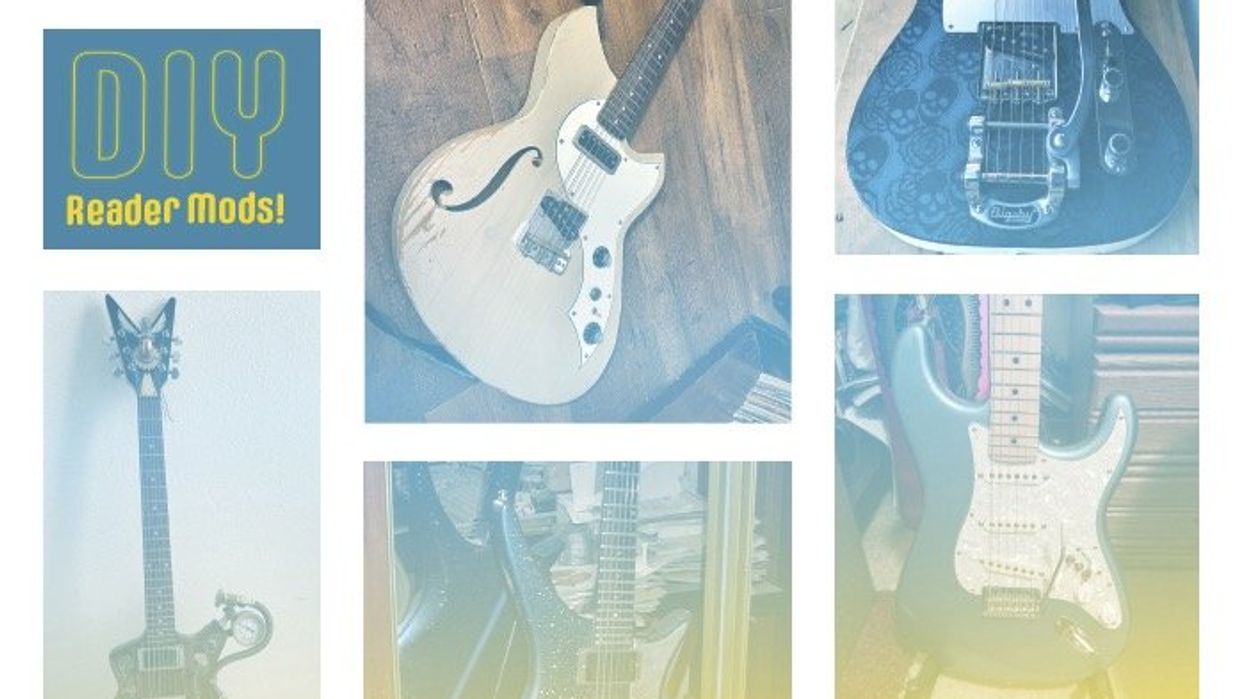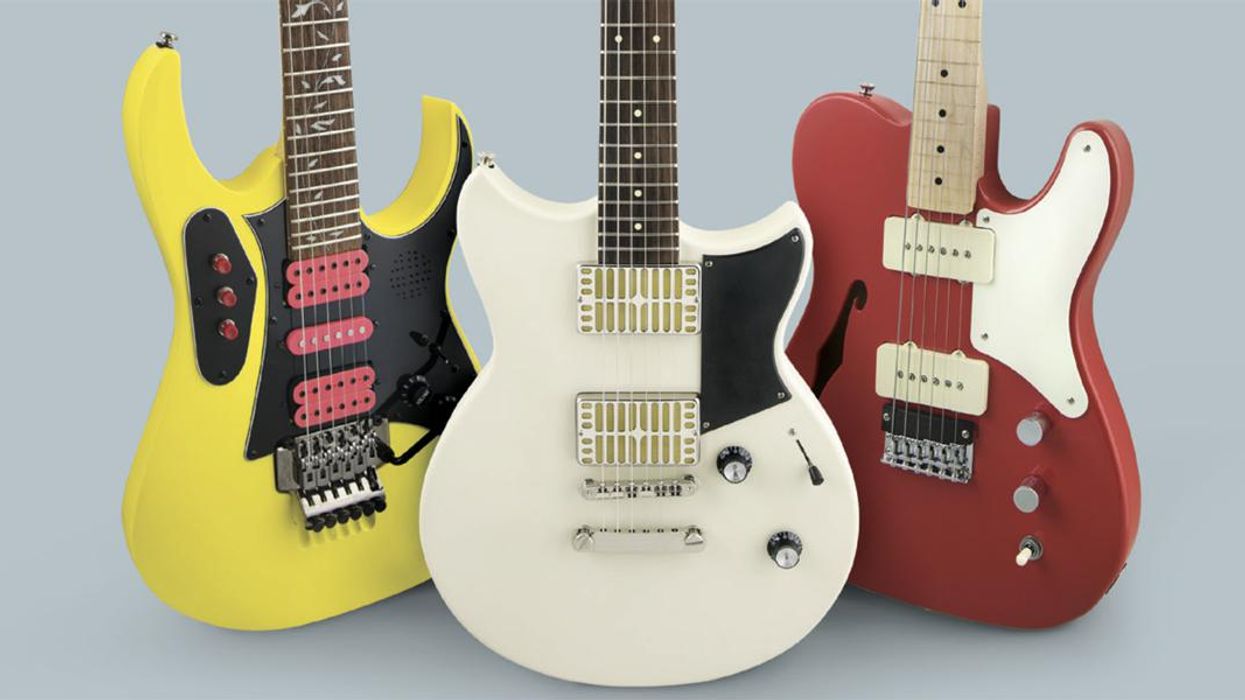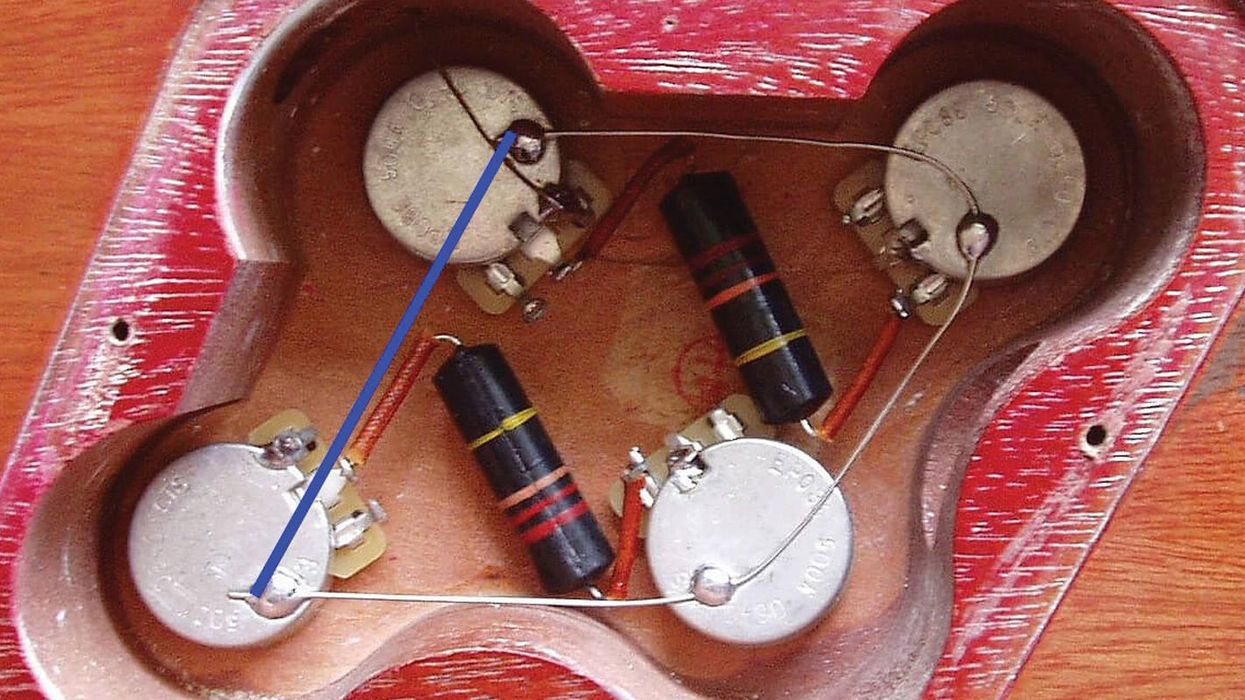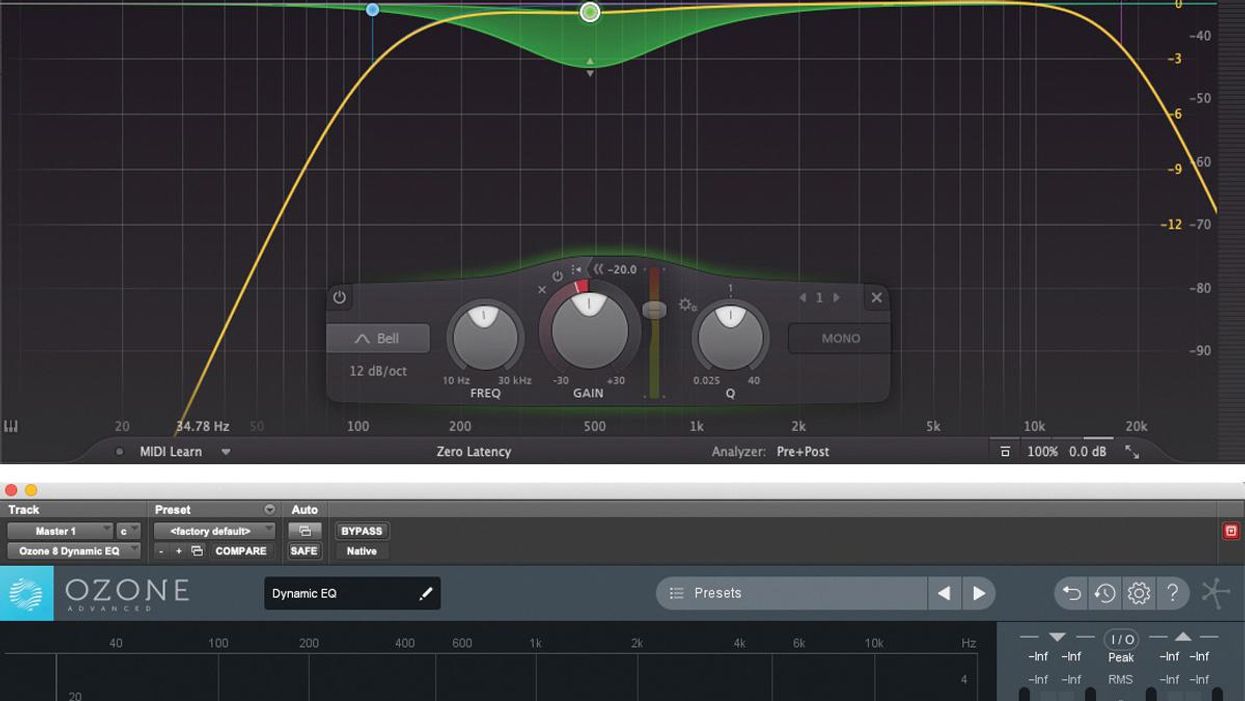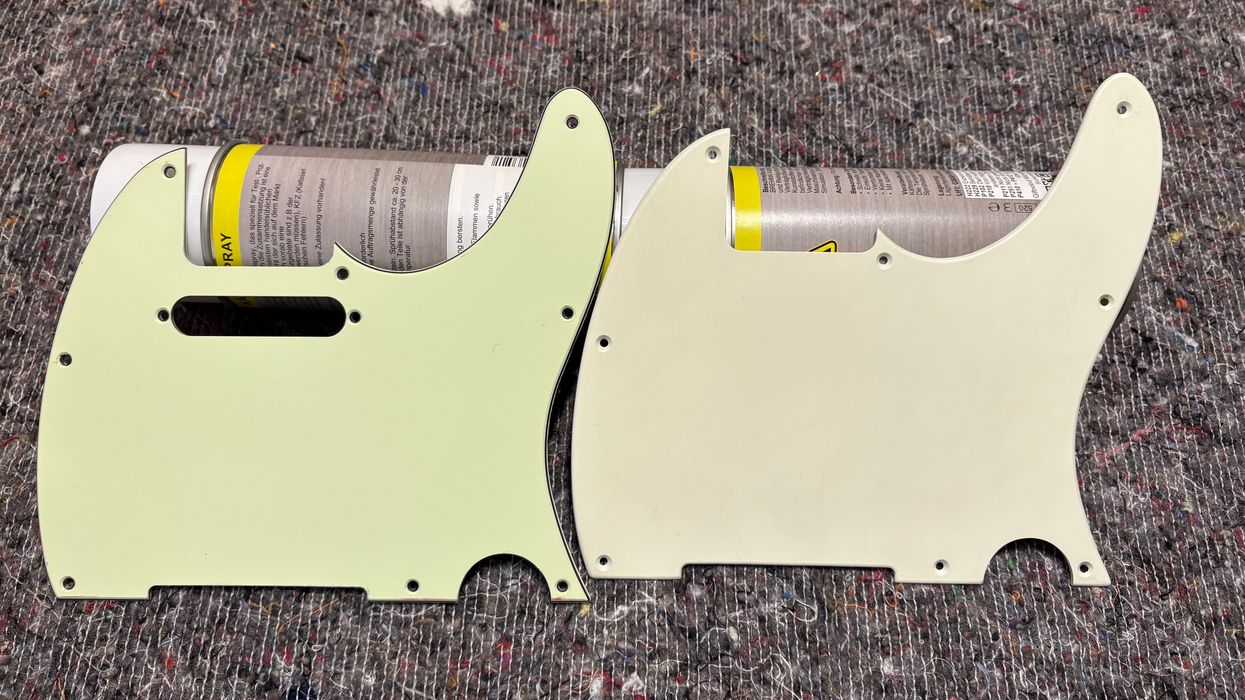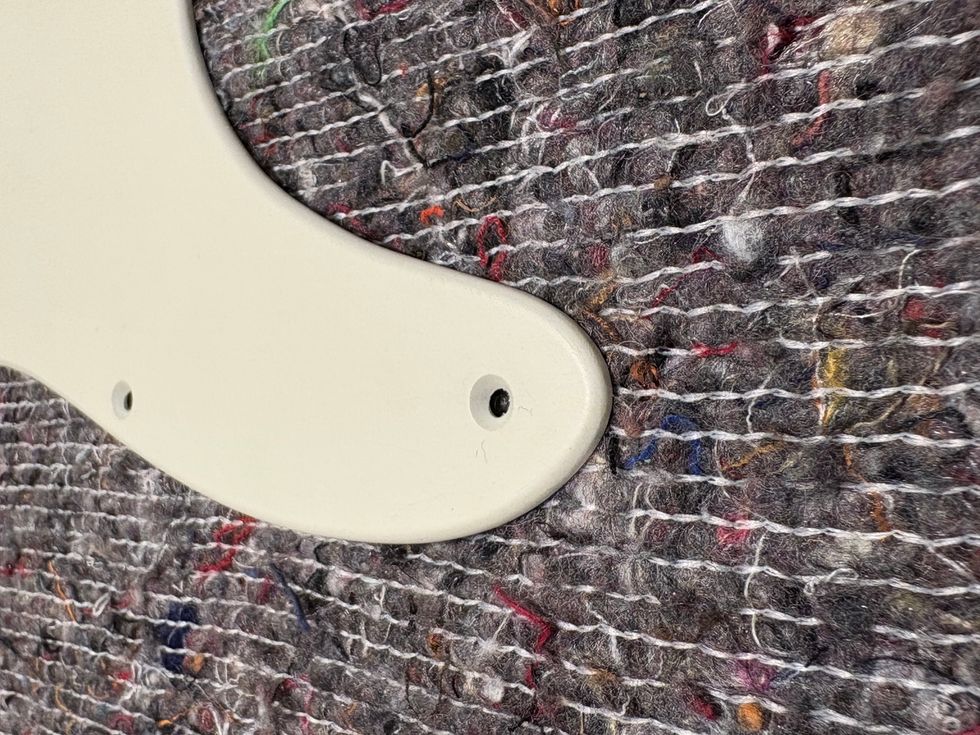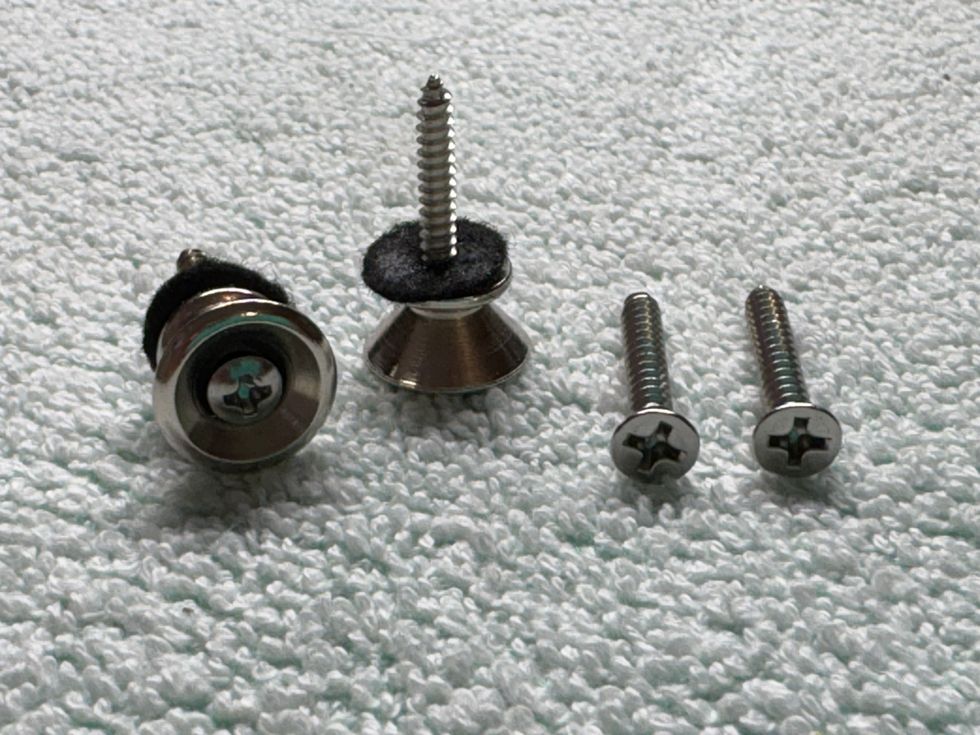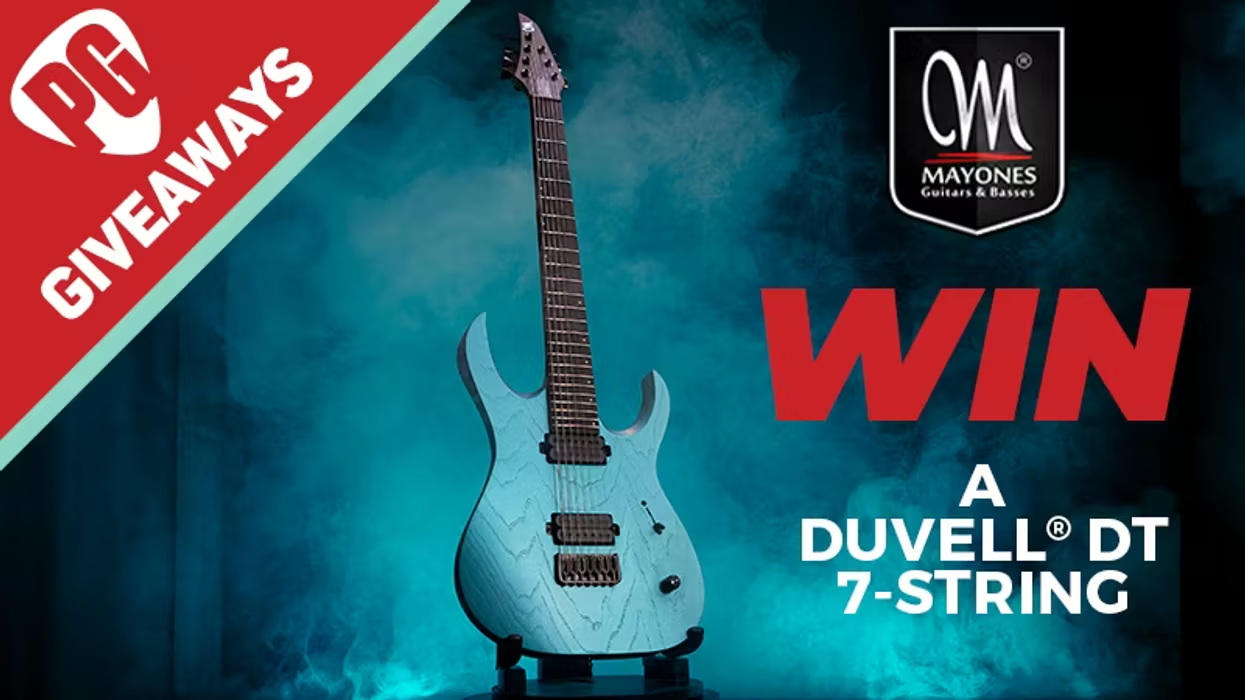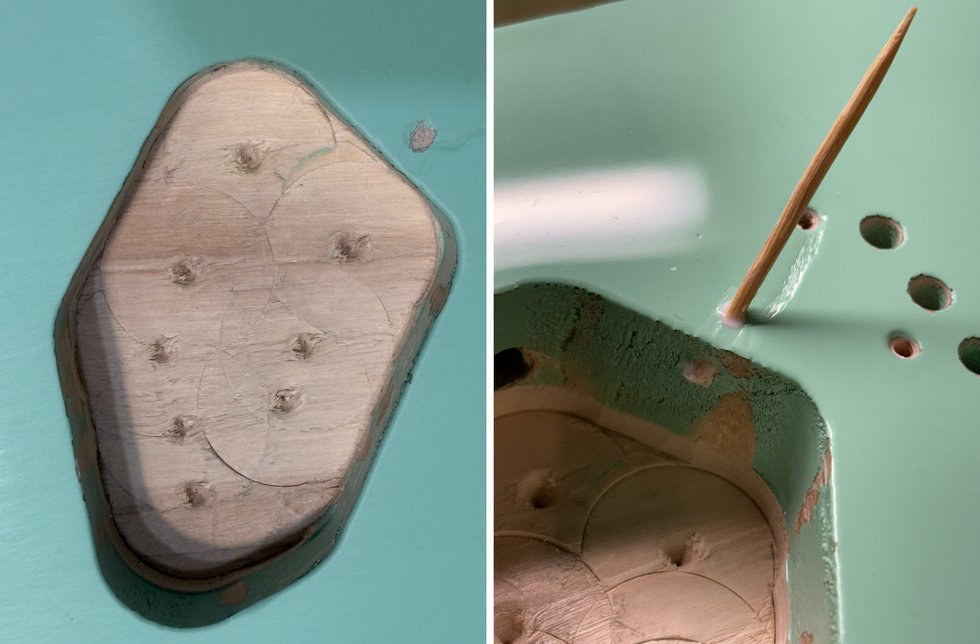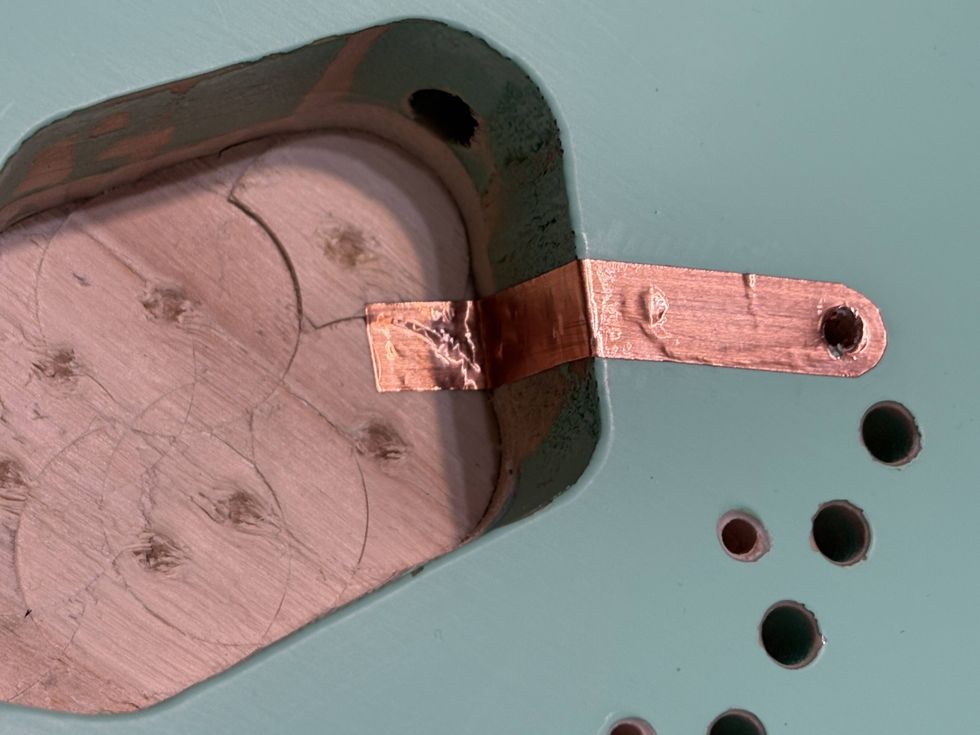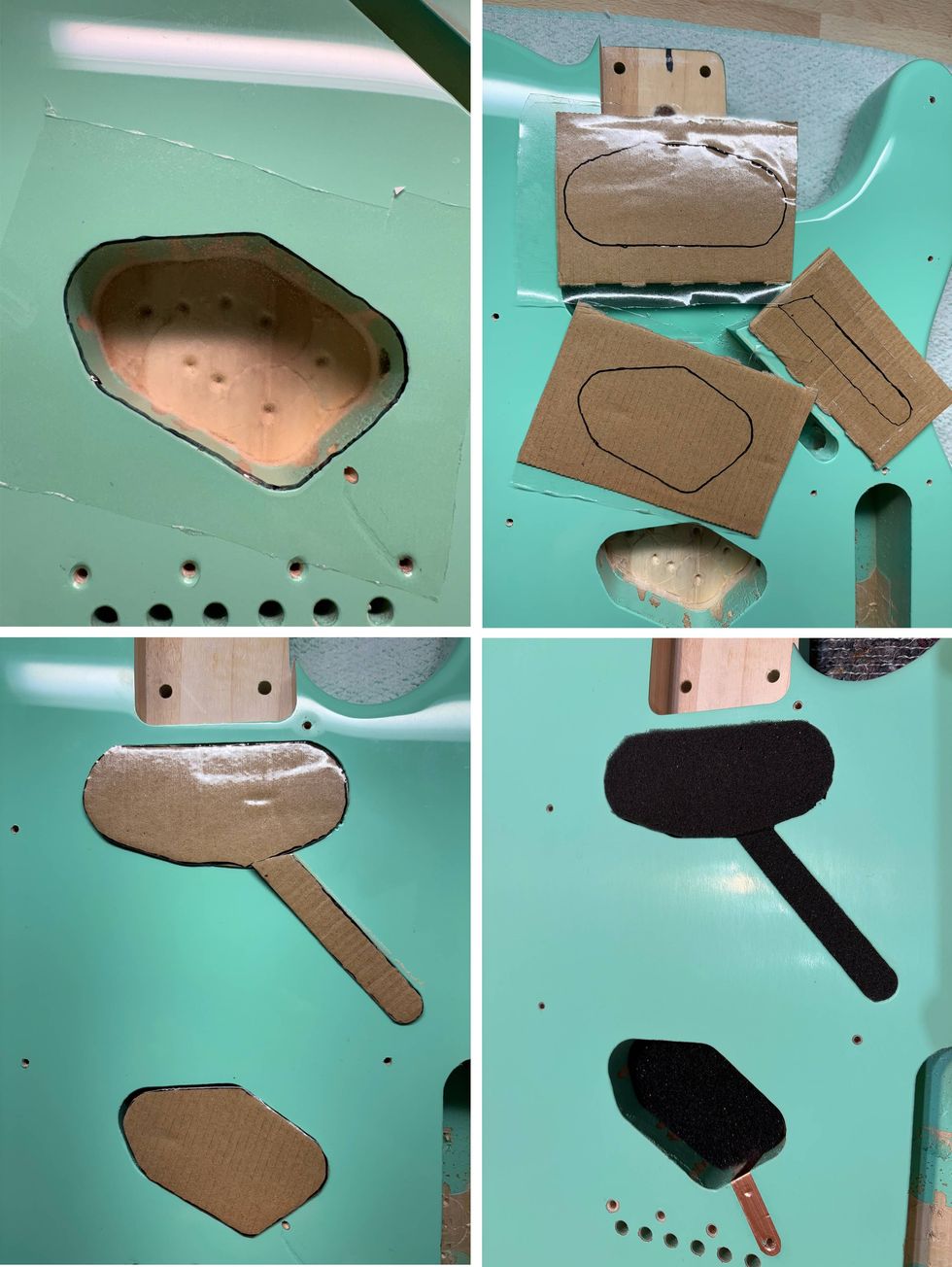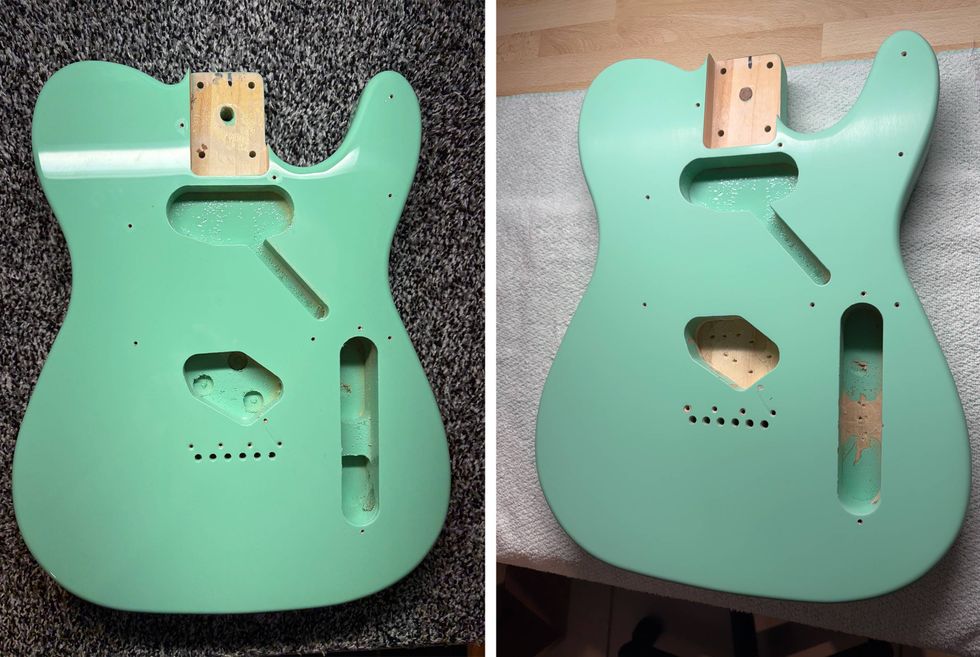Experienced acoustic musicians know that when it comes to making stellar recordings, there are only a few engineer/producers who get the call, and Nashville legend Bil VornDick is at the very top of the list. He’s worked on more than 40 Grammy-nominated projects and eight have been Grammy winners—to say nothing of the dozens of other awards his recordings have won. Starting as a guitar player in Virginia, he was encouraged by Chet Atkins to relocate to Nashville, where he found his calling as a recording engineer and producer. Though he is especially renowned for his ability to capture incredibly natural, lifelike, and detailed performances on acoustic instruments—with a particular love for acoustic guitar—VornDick can and does record every style.
He’s also well known for giving back to the music community, with his involvement in organizations such as the AES (Audio Engineering Society), the All Star Guitar Night charity concerts, the Audio Masters Benefit Golf Tournament, and many more. VornDick recalls how he went from his teenage rock band to taking advice from Chet Atkins, who introduced him to Nashville’s Belmont University, his alma mater and a place where he now mentors the next generation of engineers and producers through teaching.
You started as a musician in your teens?
Yes, I was in a rock ’n’ roll band. I was in the 7th grade playing lead guitar
with a bunch of guys that were seniors, and then just kept playing.
The bass player was Harry Dailey, who was the first guy Jimmy Buffett
hired for the Coral Reefer Band. He wrote some songs with Jimmy.
How did you go from being in a Virginia rock band to connecting
with Chet Atkins?
A friend of mine, Frank Grist, worked for RCA in the mid-Atlantic
area, out of Washington, D.C. Chet was coming to the Stardust
Lounge in Waldorf, Maryland, and I got to have dinner with him.
Then Grist brought me to Nashville and I signed some songs to
Cedarwood Publishing Company. Chet always invited me to stop
by, to say hi when I was in town. He was the one who told me
about Belmont [University]. He helped me get into Belmont, and
shortly after I graduated I became Marty Robbins’ chief engineer.
How did you make that connection?
I used to hang out at CBS Studios when I was going to Belmont and
many of those engineers knew me. Marty was looking for a chief
engineer and he came in one day when I was doing demos for Loretta
Lynn’s publishing company in his studio and asked me if I could meet
with him the next day. I had no idea what it was about. He asked me
to be his chief engineer. He was the best guy I ever worked for. Great
sense of humor. A stylist … I mean, when you count the unique
voices of the world, you’ve got your toes on your feet and your fingers
on your hand and then everybody else kind of copies those.
How did you start to branch out to other artists?
When I was in college I used to go to bluegrass festivals in the mid-
Atlantic area and I would get in for free and get cheeseburgers and
French fries and Cokes if I did the sound. I figured, what a deal!
The guy who had the sound company was [renowned bluegrass banjoist] Eddie Adcock, so I had pretty
deep roots in bluegrass because of all of
those festivals and meeting so many musicians.
I loved the music because it was one
form of music where everybody could play
and sing or they didn’t work, unlike some
of the other forms of music.
[Dobro player] Jerry Douglas and [banjo player] Béla Fleck were old friends, and when Marty passed, I guess around ’83, I built and was chief engineer for what is now Curb Studios on 16th Avenue. I helped with the construction of that and the design, and started working with Béla Fleck and continued through most of the Flecktone records, then Jerry Douglas, Alison Krauss, Rhonda Vincent, Claire Lynch, and some of the prominent names of bluegrass. It was not as lucrative as country music, but it sure was a whole lot of fun!
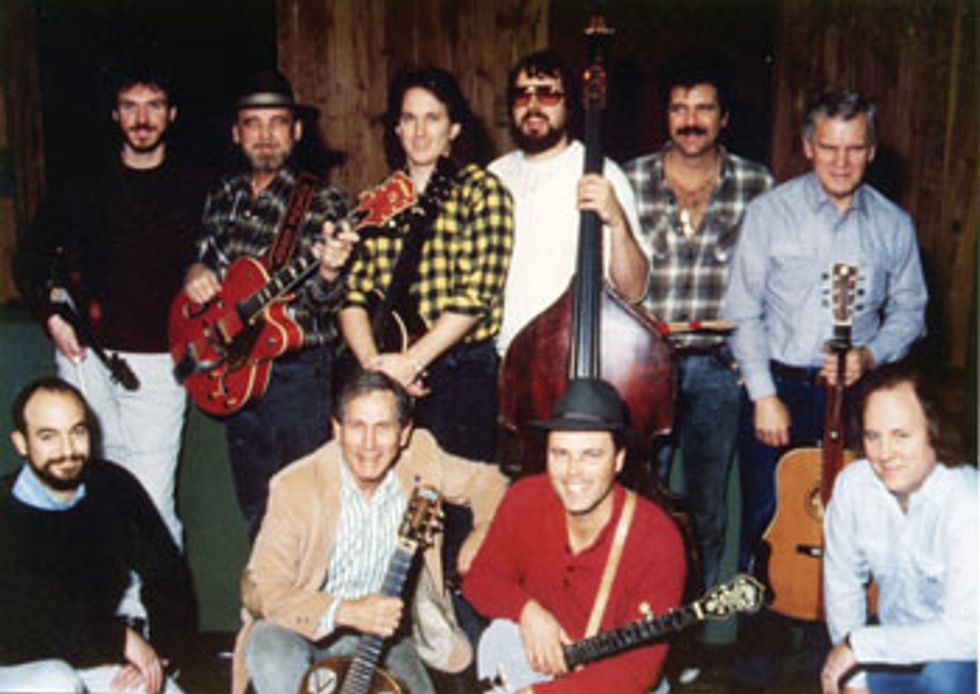
The session crew for David Holt’s Grandfather’s Greatest Hits. Back (L to R): Mark O’Connor, Duane Eddy, Jerry Douglas, Larry Paxton, Steve Turner, Doc Watson. Front (L to R): Steve Heller, Chet Atkins, David Holt, Bil VornDick.
Bluegrass was your primary area early on,
but you branched out to jazz, country,
Celtic, and rock.
Well, I’m doing a lot of pop music now,
with artists from the past that were established
on major labels. I’m working on Jon
Pousette-Dart’s new album right now. He
was on Capital for all those years. Tomorrow
I go into pre-production with Lynn
Anderson, who had “I Beg Your Pardon, I
Never Promised You a Rose Garden.”
But I guess we’re talking about guitar players ... I worked with Bryan Sutton early on, when he was doing his first album. And the tribute album for Merle Travis on Shanachie Records with Chet and Thom Bresh, who is Merle Travis’ son. They sent in Merle Travis’ guitars from L.A., from the vault, for the sessions, so anybody could pick up those guitars and play them on the session. I also recorded many albums with Doc Watson, and I’m very fortunate to have engineered an album [On Praying Ground, 1990] that won a Grammy for Doc. I will miss Doc a whole lot. He was such a kind man and I sort of started playing the guitar by listening to his albums when I was young.
When you’re working with an artist like
that, who has a very established style, do
you see yourself more in the engineer role
or more as the producer?
A producer to me is a mediator. In the
case of the Merle Travis thing, I was the
producer and engineer. But with Doc
Watson, [bassist] Michael Coleman was
the producer—he’d been on the road with
Doc for years. As an engineer you try and
make everyone sound like they want to be
heard. I’ve always felt that the producer was
the person who could answer the question,
“What do you think?” correctly … or as
correctly as you can, within the political
compound that you’re in.
As a producer or engineer who’s been
hired for a project, do you start in pre-production
or do things start for you
when the project comes into the studio?
As an engineer, I’ve always been involved in
the pre-production. As a producer, of course,
you’re in it for months beforehand finding
songs, going to meetings, and then helping
the artist do the arrangements. And then
trying to find the theme of the album, not
so that all the songs are necessarily about
the same thing, but so that the album has a
motif—like a painter painting a picture where
all the different elements come together.
How much, as a producer, do you have to
draw performances out of artists?
A lot. Every artist is different and unique.
Everybody has their good day, and everybody
has their bad day, from musician to
engineer to producer. Many of those artists
come in and knock it right out. That’s
one thing good about Nashville: There are
so many great musicians and guitar players.
But there are times when a producer
needs to show the artist how to become the
song—get inside of it and project it in their
performance. That’s hard to explain, but
when the artist gets there in emotion, and it comes out, that is when the hair goes up on
the back of your neck.
You’re a big fan of guitar.
I love guitar so much that I volunteer to
be the stage manager at the All Star Guitar
Night at [Summer] NAMM. I guess I have
for about 10 years. I do it to raise money
so that children can get instruments, and
that’s very important to me. I don’t charge;
I let them beat me up on their scheduling
for weeks ahead of time, “I want my
soundcheck here.” Stage managing is mediating,
but we all do it for the children with
dreams of playing music.
The 3:1 Rule
Bil VornDick always uses the 3:1 Rule when mic’ing instruments in stereo. Here’s how it works: If your two microphones are each one unit— for example, 1'—away from the instrument, then there should be three units (3' in this example) between the two microphones. VornDick also recommends keeping the two microphones between 90 and 120 degrees of each other.
Following the 3:1 Rule ensures that your recordings will be in phase, without danger of cancellation problems later in the mixing process.
Let’s talk specifics. How do you mic up
Béla Fleck’s banjo?
I use a 3:1 mic’ing technique normally on
Béla [see sidebar, “The 3:1 Rule”].
As to which mics I use, it really depends
on what banjo he’s playing. It depends on
the timbre of the instrument. With Earl
Scruggs, I’d normally used a [Neumann]
KM 84 and a [Neumann] U 87. I used
the KM 84 on the high side and the U
87 on the low side. That’s what he liked.
But every banjo is different. If it was a
very mellow banjo, then I would probably
put a Milab DC-96B on the low
side or a Sony ECM-33P on the low side
and a KM 84 or a Miktek C5 on the
high—I’m using that one a lot. But you
really have to listen to the instrument
first before you just stick mics up.
How important is the room that you’re
recording in to the final result you get?
Very important. I have the musician
move around in the room to find the
spot that translates best for the overtones
of the instrument. The bass is very particular
to axial modes [resonances caused
by sound bouncing between two parallel
surfaces] in the room, where the guitar
wouldn’t be as much. So if I’m going
into a new room, I’ll have the musician
walk around and play, sit, and then
move around some more. Find where the
instrument sounds like the instrument to
them, then the rest of it’s easy.
Do you mic acoustic guitar the same
way that you do banjo, using two
microphones?
Yes, I do. Because I hear in three dimensions
and you can’t get three dimensions
with one mic.
Do you have go-to acoustic guitar mics?
Yeah, I have a pair of [Neumann] KM
54s that I like a lot. Then the Miktek
C5s—I’m using those a lot more than
the KM 84s. I used to use KM 84s all
the time, but the C5, I really believe in
that mic.
That’s great to hear because that mic is
fairly affordable compared to the others
you mentioned.
When it comes down to it, it’s the performance.
You could record it on a Shure
SM57, and if you’ve got the performance,
that’s what the people driving down the
road are going for. A lot of people use
SM81s. The KSM141s, the new mics by
Shure, a lot of people are using those. It
depends on the budget that you have.
How far away do you place the two mics
when you’re recording acoustic guitar?
They’re about 8" off. If you’re sitting
with the guitar in your lap, there’s one
coming in to where the curve reaches the
neck; it’s not faced toward the hole. And
the other one is off the player’s shoulder,
the right shoulder coming down. If you
look at the symmetry and the angles,
they’re facing to the back of the hole
on the guitar, which is where the sound
comes resonating from.
You’re trying to capture the sound of
the whole body of the instrument, not
just getting the surface of it?
Exactly.
So you place the mics fairly close up?
It depends … if it’s a solo guitar, I move
them back. But if it’s in an ensemble,
with a bunch of people sitting around,
it’s usually about 8" or so.
I use the 3:1 rule, then move the mics around with the artist playing the instrument. If you’re going to mic in stereo, put the headphones on and make sure that the left mic is left and the right mic is right and then move them around, and ask the player, “Does this sound like your guitar?”
You’d be amazed, if you move a microphone just a little bit in, a little bit to the left, a little bit to the right, what a difference that will make, depending on the overtone series of the instrument and the key that it’s in. And the instrument, of course, is going to resonate in different keys.
Do you end up panning those two
microphones across the stereo field or
do you bring them pretty close together?
I bring them to 9 and 3 o’clock. If you
pan them all the way left and right, once
it gets to a transmitter on a radio station
you could have phase cancellation. I’m
still old school, making records for radio.
But if I were stacking a couple of guitars, I
wouldn’t have them both panned that way.
I’d have one at 8 o’clock and 1 o’clock and
the other one at 10 o’clock and 4 o’clock.
Do you worry about bleed between the
instruments when you record multiple
musicians at the same time?
If you get your angles and your positioning
of your microphones, and you have
them pretty much out of phase with the
mics on the other players, then there
really isn’t that much problem if you’re in a cardioid pattern. A good example: I had
Jerry Douglas, Tony Rice, and Earl Scruggs
sitting within three feet of each other on
one of Jerry’s recent albums, and I was able
to punch some stuff in fine.
You’ve been involved with some very interesting
projects for Fishman, creating the
guitar images for the Aura system, and also
the new Retro series guitars for Martin.
The idea was that you took guitars into
the studio and recorded “images” of them,
which are then embedded in the guitar
electronics. Were those guitars recorded in
a tightly controlled room?
Yes, I had them in an environment where
there was a baffle behind the guitar, so I
wasn’t receiving any environment in the signal
path. All you were hearing was the guitar.
How did you get involved in the
Martin project?
I got a call from Larry [Fishman], who
said that Martin wanted to put out a series of the old famous Martins: the D-18, the
D-28, the D-45, and the OM. He said,
“They’re going to bring down the guitars
from the [Martin] museum and we’re going
to image them and try to get the new
guitars—when someone plugs in with the
Aura—to sound like the old guitars.”
We really didn’t know what was going to happen until Larry processed some of the signal into an Aura and actually plugged it in, to see if it would work. We were both amazed.
That’s a fun project!
It took a couple of days. They came to the
studio here at the house and unloaded a
million dollars worth of Martins. [Laughs.]
Then I went out and got a slew of microphones—an Electro-Voice 639, I got that
from RCA Studio B. It was one of [legendary
Nashville producer] Owen Bradley’s
microphones. I got a Telefunken ELA
M251 from there, and Wes Dooley let me
use some of his ribbon mics.
So you didn’t just use the original vintage
guitars, you also used original vintage
microphones.
Yes, because there are a lot of traditional
players that want—but can’t afford—an old
vintage Martin, but they want it to sound
like it would have sounded in the ’30s, ’40s,
or ’50s. That’s how we were able to accomplish
it.
How much does the rest of the gear that
you use—the preamps, EQs, compressors—factor into the sounds that you get?
Quite a bit. On [the Retro series], I was
shooting four microphones at one time
and I went through APIs [mic preamps]. I
needed a defined and uncolored sound on
them, so that’s what we used.
What about when you’re recording someone
like Jerry Douglas or Béla Fleck?
The Great River [MEQ-1NV preamp] and
a pair of [Neumann] U 67s are normally
what I use on Jerry. On Béla it would vary
depending on the banjo. I use Neve preamps
a lot or APIs.
How much equalization did you end up
doing once you capture those sounds?
Mainly just high passing. It would be very
good for the people who are reading this
to know that they need to know the frequency
range and the lowest note on the
instrument that they are recording. Once
you put that high-pass filter in, the instrument
will feel like it is lifting itself out of
the speakers.
Other than that, there’s no EQ?
No, not much, if any.
What about when you’re making a record?
Sometimes there are different hot spots in
some guitars. The older guitars usually have
a boom between 160 and 240 Hz that you
have to taper a little bit. But usually that’s
about it. It depends on what key they’re in.
It can vary from song to song?
Right. The key of the song is very important.
It’s like tuning a vocal. If you don’t
know what key the vocal is in, you could be
searching all day for the right notes.
What advice do you have for someone
who’s trying to record acoustic instruments
at home, who doesn’t have an ideal
acoustic environment?
Base it all on performance.
Don’t stress about the sound quality?
Well, sound quality is good, but the people that
are driving down the road, I think they’re more
interested in the performance than they are
in, “Whoa, what microphone did you use on
that?” I don’t know of anybody driving down
the road listening to the radio calling anybody
and asking them, “What mic are you using?”
Well, I do get those calls, I guess. [Laughs.]
It’s all about the song.
It is about the song. The main thing is, if it’s
not happening, walk away. Get something
to eat, make sure your blood sugar’s right,
and go in and try again. The hardest thing
for most artists is knowing when to stop and
walk away. In all the decades I’ve been doing
this, usually when I have an artist who’s getting
frustrated because they can’t play exactly
what they’re hearing in their head and their
fingers aren’t working with their mind, if you
get them away for 10 or 15 minutes, they’ll
go right back in and knock it right out.
That’s the psychologist part of being a
producer … knowing when to have the
artist step back.
Exactly.
What’s the hardest instrument to record?
Probably the hardest instrument to mic
is the hammered dulcimer because of the
overtone series it generates. The mics have
to be perfectly in phase. I normally use KM
84s. I’m getting ready to do my 88th album
on Craig Duncan soon.
Wow, 88 albums?
He does instrumental albums for the gift
markets and tourist places that sell a lot of
product. You’d be amazed how many people
want to listen to the melody, but they don’t
want somebody screaming at them. And
pretty much in music today, it’s how loud
can you make it and how compressed is the
vocal? A lot of people say, “Why are they
screaming at me?” So listening to instrumental
music is pleasing and relaxing.
It’s an industry perception, rather than a
listener perception, that a recording has
to be made that loud.
I learned that a long time ago. My daughter
had a birthday party and the girls found my
collection of vinyl. They had never seen vinyl
records before, so I showed them how to set
the needle down. What I noticed was that
when they put the needle down, they turned
it up and listened to it. Then later, I came
down, you know, delivering the pizzas and
the Cokes and stuff, and they had the CD
player out and they were playing a CD, pushing
play and then turning it down. That told
me a whole lot.
When you mic the hammered dulcimer,
do you mic that in stereo?
Yes, in stereo, using the 3:1 rule. But I keep
the mics up and away because the hammers
are moving so fast that he doesn’t have a
chance to hit any of the mics.
What about upright bass?
I usually mic it with a C5 up on the
top and usually one of my Neumann U
47s on the low end. If we’re going more
“organic,” I’ll use an RCA 77DX. The
new Shure KSM353 is really nice, and
the A440 from AEA, if you’re looking
for a traditional thing. But on [jazz bassist]
Charlie Haden’s album [Rambling
Boy], I used a [Telefunken] 460 on
the top end and a U 47 on the low
side and ran them through two [Neve]
1073 preamps. Charlie [recipient of the
Lifetime Achievement Award at the 2013
Grammys] was in seventh heaven, which
made me very happy that he was happy.
Half of it is making the instrument sound
like the instrument when the musician
comes into the control room.
Have you done much bluegrass recording
where you record everything with one
microphone?
In the old days, but we still would address the
bass, because the bass is usually nondescript
back there. I did one artist … I was still going
to Belmont, I guess, working on the weekends
at the studios in Hendersonville that the Oak
Ridge Boys owned. And a very prominent
bluegrass artist came in. I think it took me
45 minutes to record that album. We went
straight to 2-track. It was nice because the studio
paid me for the day. [Laughs.] By the time
I had the 1/4" tape edited and the box written
on with all the information, it was probably
20 minutes after 11. We started at 10.
People don’t make albums like that
these days.
I did an album like that with Richard
Greene, a fiddle player. It was fun because I
mixed it as we went.
If somebody’s putting together a home
studio, where should they put their dollars?
What should be the priority?
Interface and word clock. The word clock
runs everything, and your audio interface
is your converter. If you have some really
good mic preamps—you’d be amazed what
an SM57 and an SM58 sound like with a
really good mic pre. If you’re a guitar player,
save up and get the microphones that will
last you a lifetime instead of just buying
something that’s going to get you by. The
same thing with mic preamps. I usually
tell my students, have a good stereo signal
path—mics and mic preamps—and then
for vocals, have a good mic preamp and a
couple of mic choices.
A lot of people still cut their tracks in the bigger studios. Most of your time is going to be spent overdubbing.
So keep the focus there rather than trying
to set up a home studio where you can
track a whole band all at once and have to
sacrifice the quality of the gear to do it?
Exactly, because it’s cheaper in the long
run to go in to a bigger room. Be prepared,
be rehearsed. The Beatles went in and did
their first album in 11 hours, something
like that. If you’re prepared, you can go
into a studio and rent it for a day for less
than it would cost to buy a half-decent
microphone.
Then you can take the tracks home and
spend the time there working on the
details and overdubs.
Exactly. What’s so funny is that I work
with a lot of artists that should be just artists,
but they also want to be engineers,
and they don’t realize that there are two
hats. The artist will waste a lot of time and
their creativity trying to figure out how the
computer works or the interface works or
plug-ins work or what to use, instead of
being creative. It happens with songwriters.
A songwriter will write a hit song, then
they’ll go out and buy a bunch of gear and
have a studio in their house and then they
stop writing songs. The same thing with
artists—they stop singing or a guitar player
will stop spending time practicing. For the
hours of figuring out how to hook up a
microphone and get the best signal, why
not have somebody who actually knows
how to do that and spend your time practicing
and working toward that moment
when you’ll be working with that engineer?
You have to figure out what you want to be
in life. Do you want to be an artist or do
you want to be someone that has a really
steep learning curve to become an engineer?
Have you noticed that lately with artists?
Are they not able to knock it out in one
or two takes?
No, normally they can knock it out. There’s
a group that I work with called MilkDrive.
They’re like a new New Grass Revival out
of Austin. They can come in and they just
knock it out.
Because they’re focusing on being artists.
Yes, they all have their Pro Tools 002s and
003s and they play around to get their ideas
and their demos down, but not a master
recording for release.
The Hillbenders is another group out of Missouri. They all go down live—vocals, everything. There are still groups out there that can do it.
Selected Bil VornDick Discography
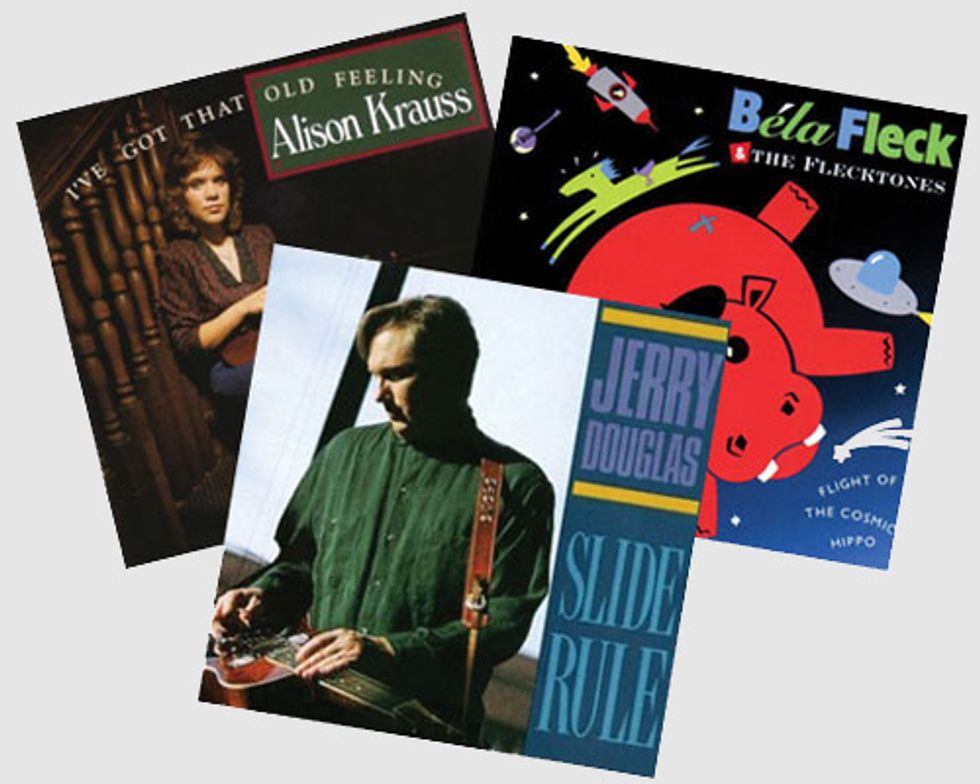
Alison Krauss and Union Station, I’ve Got That Old Feeling
Rhonda Vincent, Taken
Charlie Haden and Family, Rambling Boy
Ralph Stanley, Clinch Mountain Country (featuring Bob Dylan, Vince Gill,
Dwight Yoakam, Kentucky Headhunters, Diamond Rio, Marty Stuart, Ricky
Skaggs, and many more)
Béla Fleck and the Flecktones, Flight of the Cosmic Hippo,
Tales from the Acoustic Planet, and many more solo and with the Flecktones
Mark O’Connor, The New Nashville Cats
Doc Watson, On Praying Ground and many more
Shawn Lane, Power of Ten
Jerry Douglas, Russ Barenberg, and Edgar Meyer, Skip, Hop & Wobble
Jerry Douglas, Slide Rule and many more
Marty Robbins, Legend and many more




